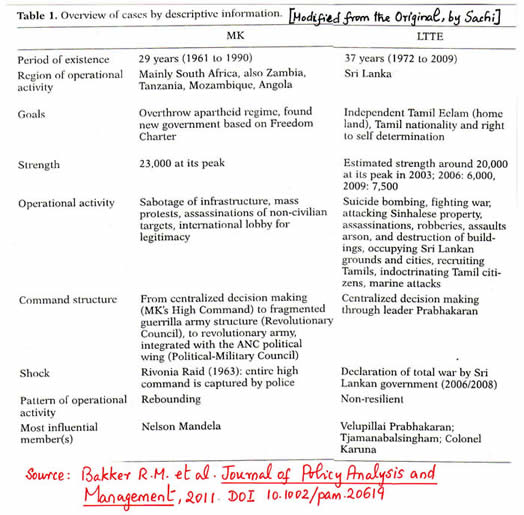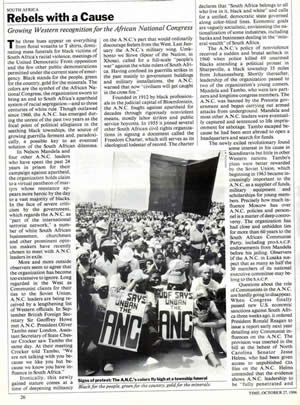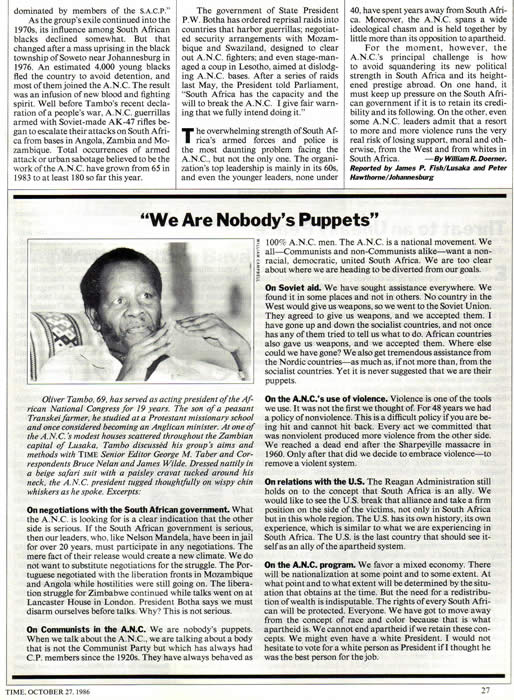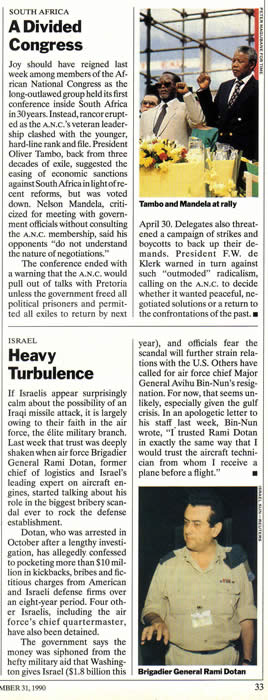
Ilankai Tamil Sangam
Association of Tamils of Sri Lanka in the USA
Published by Sangam.org
by Sachi Sri Kantha, February 27, 2012
|
Two specific comments by Bakker et al. on LTTE data deserve criticism. First, who was that most influential LTTE guy with a garbled name ‘Tjamanabalsingham’? Of course, LTTE’ theorist was Anton Stanislaus Balasingham (1938-2006). But, he was not the guy named by Bakket et al. The first and middle names of Balasingham were Christian origin, and it sounds absurd that Bakker et al. couldn’t recognize these names without error. The other alternative was, it refers Chetty Thanabalasingham, one of Prabhakaran’s early associates. Tamils do not even recognize him as belonging to the LTTE pantheon! Secondly, Bakker et al. had incorrectly inferred, “Western governments cracked down on terrorism, and he [Prabhakaran] lost legitimacy among his own people after the defection of Colonel Karuna with 6,000 of the LTTE’s best troops.” Prabhakaran never ever lost legitimacy among Tamils. |
Criminal activity of the Tamil Tigers
I continue my commentary on the theory of ‘dark network resilience’ proposed by Rene Bakker, Jorg Raab and Brinton Milward [Journal of Policy Analysis and Management, 2011: DOI 10.1002/pam.20619], as this offers ample opportunity for me to compare LTTE’s performance with that of Mandela’s Umkhonto we Sizwe (MK), the armed wing of the African National Congress (ANC). Furthermore, the activities of both LTTE and MK deserve comparison with that of Uncle Sam’s pre-eminent dark network, the CIA. I provide a modified version of Table 1 offered by Rene Bakker et al., in which I have omitted the details pertaining to Fuerzas Armadas Revolucionarias de Colombia (FARC), the third dark network studied by these authors.

In commenting on the ‘main motivation factor’ of clandestine networks they opted to study (MK, LTTE and FARC), Bakker et al. offer the dichotomous split of greed and grievance. This ‘greed and grievance’ hypothesis was espoused in 2000 by Paul Collier (World Bank) and Anke Hoeffler (Oxford) in analyzing the 27 major armed conflicts in poorest countries that led to civil war. Bakker et al. had classified that FARC’s goal was greed-driven. But, the goals of MK and LTTE were grievance-driven. As such, my omission of Colombia’s FARC dark network is reasonable.
Towards the end of Part 3, I made reference to the comment by Bakker et al. that,
“While political motives (independence for a Tamil homeland) overwhelmingly dominated until the end, the network employed some criminal activity in the form of credit card, check and bank fraud to create financial revenue. [footnote: R. Gunaratna, pers.comm., September 29, 2010].”
My pointed comment was, “About this “some criminal activity” of LTTE, for proper evaluation I’d have been happy if Bakker et al. had checked with their source Dr. Gunaratna, what percentage of CIA’s activities fall into criminal activities (as Dr. Gunaratna brags himself in the popular media as one who is close to CIA) and reported it in their paper. And one should not be too partial to LTTE: how about the authentic credit card, check and bank fraud activities perpetrated by legitimate politicians and their cronies (including Presidential siblings!) as well as regular armed forces in Sri Lanka?” I have to provide some additional details on this “criminal activity” of money laundering and drug trafficking.

The issue of money laundering and drug trafficking
The Time magazine carried a cover story in its December 18, 1989 issue on money laundering. It carried the bylines of Jonathan Beaty and Richard Hornick. I provide excerpts, in which CIA’s activity was included.
“What makes enforcement so difficult is a financial murkiness that has long frustrated tax collectors as they search for dirty money afloat in the world’s oceans of legitimade payments. The multibillion-dollar flow of black money, the profits from criminal enterprise, moves through the world’s financial institutions as part of a vastly larger
quantity of gray money, as bankers call it. This dubious, laundered cash amounts to an estimated $1 trillion or more each year. Often legitimately earned, this money has an endless variety of sources: an Argentine businessman who dodges currency-control laws to get his savings out of the country; a multinational corporation that seeks to ‘minimize’ its tax burden by dumping its profits in tax free havens; a South African investor who wants to avoid economic sancitions; an East German Communist leader who stashed a personal nest egg in Swiss bank accounts; or even the CIA and KGB when they need to finance espionage or covert activities overseas.”
Then, there were these two hints. First, “Yet many major banks are still participants, witting or not, in ever more sophisticated laundering operations.” Secondly, “To close the gap, [President] Bush’s offensive against drug-cash handlers is being placed in the hands of a newly created task force that includes the CIA, the National Security Agency and the Pentagon, as well as a team of drug, tax and customs agents.” All know that George Herbert Walker Bush did serve as the director of CIA for less than an year in 1976. If CIA was(is) involved in money laundering, then how effective it would be if CIA itself was included in the task force to monitor money laundering? Isn’t it like anointing the proverbial fox to guard the chicken coop?

Bright Networks and Dark Networks
Rene Bakker’s colleagues Jorg Raab and Brinton Milward published a study in 2006 in the journal International Public Management Journal, entitled ‘Dark networks as organizational problems: Elements of a theory’. In this study, they offered the proposition that, ‘a bright network is legal and visible, and a dark network is illegal and tries to be as invisible as possible.’ If this proposition holds, banks everywhere have to be in the bright network category. But, they do engage in money laundering, ‘willingly or not’, according to the Time magazine’s cover story. Let me cite another American institution, the Hollywood, which for its metaphorical glitter, has to be grouped as a bright network. But, Hollywood also indulges in money laundering and drug trafficking. Count the numerous movie stars and other associated Hollywood personalities (singers, directors, producers, executives and agents) who had drug problems and lost their lives.
I offer one particular example recorded in the Time magazine’s cover story. “The money-laundering game is also creating a mess for investigators of other crimes, who are running into dead ends when they try to identify the players in fraud cases. Beverly Hills police are stymied by last August’s Mob-style assassination of Hollywood entertainment executive Jose Menendez and his wife Kitty, who were shotgunned in the front room of their mansion. Menendez had been an executive and director of Carolco Pictures, an independent movie company that produced Sylvester Stallone’s Rambo movies, and police have been unable to unravel his business affairs or identify all his partners. Carolco is controlled by a Netherlands holding company that is, in turn, owned by a tangle of offshore family trusts.”
What I deduce from these, is that the flimsy money laundering and drug trafficking charges on LTTE parroted ad nauseam by sloppy academics based on dubious sources, even if they have been proved as valid, are inconsequential compared to a control group like an authenticated American dark network (CIA) or a bright network (American institutions like banks and Hollywood).
Sloppy Data Collection on MK and LTTE
 One issue that irked me in this study by Rene Bakker et al. was the sloppy data collection on the MK and LTTE. Though I have mentioned this in part 1 of this series, check the Table 1 once more. The most influential member(s) for MK, they identify only Nelson Mandela! And for the LTTE, they mention three Velupillai Prabhakaran, Tjamanabalsingham(??), Colonel Karuna! If only, these researchers had checked the past issues of Time magazine, they could have identified that other than Mandela, the most influential member of MK was Oliver Tambo. For reader’s benefit, I provide scans from two pages of Time issue of October 27, 1986, which carries Oliver Tambo’s interview excerpts. Also, Bakker et al. present a case that while LTTE was wounded by Col Karuna’s split in 2004, MK (ANC) was not affected by conflicts within the network. This was not true. I provide a scan from Time issue of December 31, 1990, which reports that even Mandela and Tambo faced rancor due to generational split during the first conference they had within South Africa after a 30 year gap.
One issue that irked me in this study by Rene Bakker et al. was the sloppy data collection on the MK and LTTE. Though I have mentioned this in part 1 of this series, check the Table 1 once more. The most influential member(s) for MK, they identify only Nelson Mandela! And for the LTTE, they mention three Velupillai Prabhakaran, Tjamanabalsingham(??), Colonel Karuna! If only, these researchers had checked the past issues of Time magazine, they could have identified that other than Mandela, the most influential member of MK was Oliver Tambo. For reader’s benefit, I provide scans from two pages of Time issue of October 27, 1986, which carries Oliver Tambo’s interview excerpts. Also, Bakker et al. present a case that while LTTE was wounded by Col Karuna’s split in 2004, MK (ANC) was not affected by conflicts within the network. This was not true. I provide a scan from Time issue of December 31, 1990, which reports that even Mandela and Tambo faced rancor due to generational split during the first conference they had within South Africa after a 30 year gap.
Two specific comments by Bakker et al. on LTTE data deserve criticism. First, who was that most influential LTTE guy with a garbled name ‘Tjamanabalsingham’? Of course, LTTE’ theorist was Anton Stanislaus Balasingham (1938-2006). But, he was not the guy named by Bakket et al. The first and middle names of Balasingham were Christian origin, and it sounds absurd that Bakker et al. couldn’t recognize these names without error. The other alternative was, it refers Chetty Thanabalasingham, one of Prabhakaran’s early associates. Tamils do not even recognize him as belonging to the LTTE pantheon! Secondly, Bakker et al. had incorrectly inferred, “Western governments cracked down on terrorism, and he [Prabhakaran] lost legitimacy among his own people after the defection of Colonel Karuna with 6,000 of the LTTE’s best troops.” Prabhakaran never ever lost legitimacy among Tamils. It was Colonel Karuna, who lost legitimacy among Tamils for his treason. Like the fate of all traitors, for the ‘LTTE secrets’ he delivered to the Sinhalese army, majority of Sinhalese hate him for his duplicity. Karuna couldn’t contest the 2010 general election, neither in his native Batticaloa nor in any one Sinhalese electorate! A ‘society notes’ feature that appeared in the Sunday Times (Colombo) of January 8, 2012, with the caption ‘Ball for Karuna, jail for Fonseka’ had this script on Karuna’s behavior: “He [Karuna] shook, rattled
|
| Colonel Karuna [Sunday Times, Jan.8, 2012] |
and rolled to the music of the Gypsies. He was seen toasting glasses of whisky with other revellers. Not surprisingly, some chose to walk away instead of saying 'cheers' to this present day Minister. ‘Would the victorious Americans or British have had a New Year party with Hitler singing,’ asked an irate retired military officer at the bash. "Only in Sri Lanka, a land like no other" consoled his friend as they took their swig of arrack.”
Tally these as pitfalls for depending on dubious sources like Rohan Gunaratna, for “valuable information on the Tamil Tigers”.
*****
© 1996-2025 Ilankai Tamil Sangam, USA, Inc.